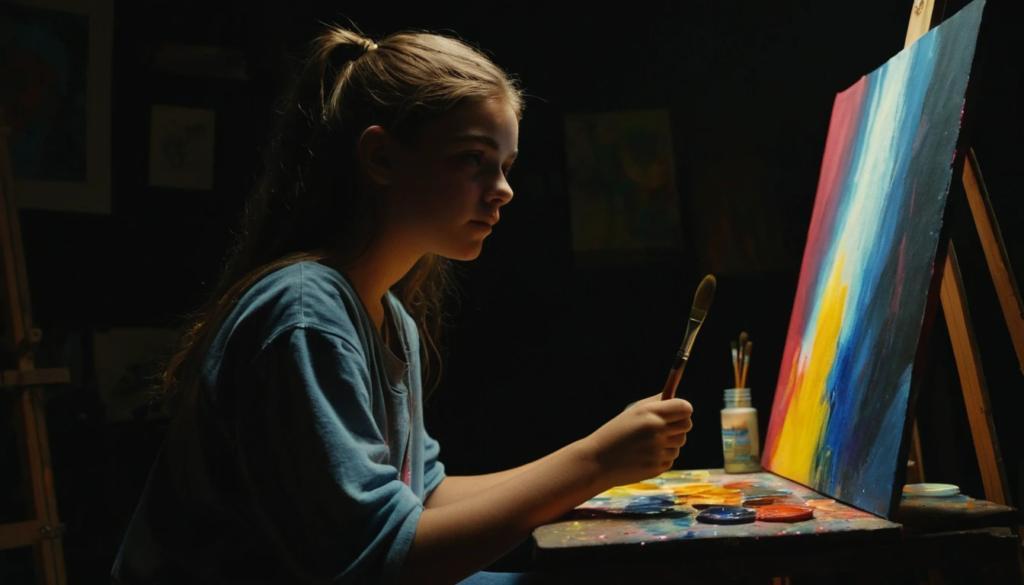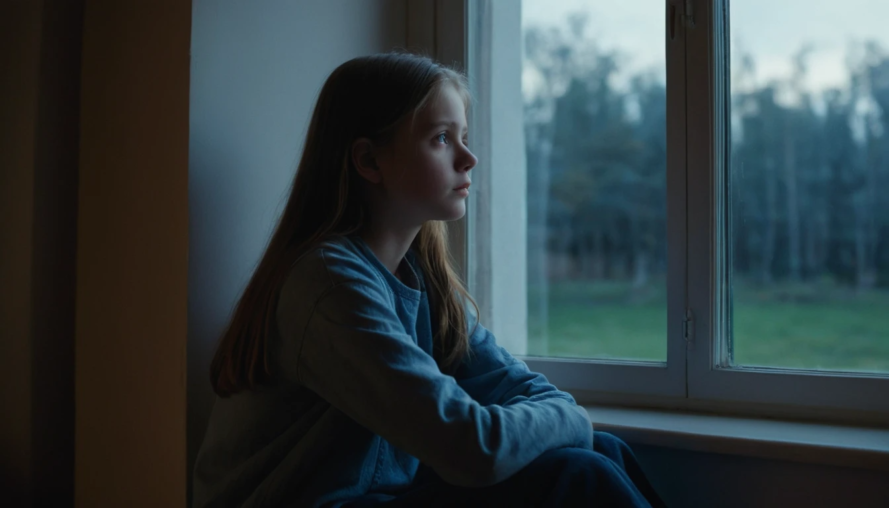Imagine feeling so invisible, so lost, that you begin to question if anyone would even notice if you were gone. For 16-year-old Maya, this was her everyday reality. The constant pressure from school, the overwhelming loneliness, and the haunting feeling of being trapped each day felt like a silent battle.
Maya had always been the quiet, creative type, but behind her calm demeanor was a storm she didn’t know how to fight. The pressure from school was suffocating. Her grades were falling, her friends seemed to be moving on with their lives, and her family’s expectations felt like an impossible mountain to climb. Every day, she felt like she was losing herself just a little bit more.
It wasn’t just about school. It was the loneliness—the kind of loneliness that doesn’t go away even when you’re surrounded by people. Maya couldn’t talk to her friends because she didn’t know how to explain the suffocating sadness she was feeling. She didn’t want to burden her parents, who were already stressed with their own lives. So, Maya did what many teens do when they feel like no one’s listening: she bottled it all up.
It wasn’t until one afternoon, when the weight of it all became too much, that Maya reached a breaking point. She found herself staring at the edge, considering whether it would just be easier to end the pain. The thoughts were loud, persistent, and terrifying. But then, something happened.
It was a message. A simple “Hey, you good?” from her best friend, Riya.
At first, Maya didn’t know how to respond. She hadn’t been answering calls or texts much, but for some reason, this one felt different. It wasn’t just a “Hey, what’s up?” it was a genuine check-in, an open door that Maya didn’t even realize she needed.
Riya wasn’t trying to fix anything and wasn’t offering unsolicited advice. She didn’t even push Maya to talk. She just said, “I’m here for you. Whenever you’re ready to talk, I’ll listen.”
A few days later, Maya finally took the first step. She reached out to her school counselor. It wasn’t easy. It took every ounce of courage she had left, but walking into that counselor’s office marked the beginning of her healing.
That was the moment things began to shift for Maya. She didn’t open up right away, but that message planted a seed of hope. Someone cared. Someone noticed. Maybe it was worth sticking around to see what could happen next.
Over time, therapy helped Maya untangle the mess in her mind. She learned coping mechanisms for the stress, the pressure, and the anxiety. It wasn’t a magic fix some days were still hard but she felt stronger. And through therapy, she discovered something that truly began to save her: her passion for painting.
Painting had always been an escape, but Maya never thought of it as something she could rely on for healing. She started sketching again just little things at first, but they gave her a sense of peace. Over time, those little sketches turned into full paintings, each one more vibrant and expressive than the last. She painted her anger, her sadness, and eventually, her joy.

Her canvas became a place where she could let it all out with no judgment, no expectations, just her, the brush, and the colors.
Maya’s journey wasn’t perfect, but it was hers. She found hope in the smallest of things: a message from a friend, the courage to ask for help, and the power of self-expression through art.
And now? Maya knows that even in the darkest times, there is a way back. She’s still learning, still healing, but she no longer feels trapped in a world where there’s no way out.
To anyone reading this, remember this: You are never alone. There is always a way through, even when there isn’t. Whether it’s a friend reaching out or a counselor offering guidance sometimes, all it takes is a single step toward hope to change everything.
If Maya could find light in the darkness, so can you.
Keep reading foramz for your daily dose of emotional support.


Leave a Reply